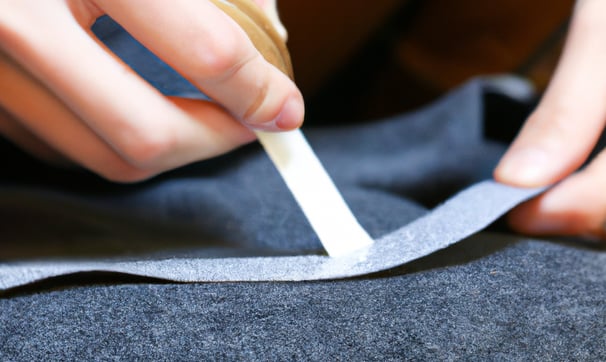Sticking It Together: The Art and Science of Using Adhesives on Cloth
GLUE COMPATIBILITY


This blog post explores the versatility, benefits, and creative applications of using various types of adhesives on fabric, from traditional sewing alternatives to innovative crafting and design possibilities.
Sticking It Together: The Art and Science of Using Adhesives on Cloth
When it comes to fabric and textiles, sewing and stitching might be the traditional go-to methods for creating bonds, but adhesives offer a world of possibilities for attaching, repairing, and crafting with cloth. In this blog post, we explore the techniques, considerations, and creative applications of using adhesives on various types of fabric.
The Versatility of Fabric Adhesives:
Fabric adhesives have come a long way from their humble beginnings. Today, they offer a viable alternative to traditional sewing, providing numerous advantages:
Speed and Convenience: Adhesives allow for quick bonding without the need for intricate stitching, making them perfect for time-sensitive projects.
Precision and Control: Adhesives offer precise placement, ensuring that fabrics stay exactly where you want them without the risk of uneven stitches.
Neat Finish: When applied correctly, fabric adhesives create clean, seamless bonds, eliminating the need for visible stitches or seams.
Types of Fabric Adhesives:
Liquid Fabric Glue: Ideal for permanently bonding fabric, this type of adhesive dries clear and remains flexible after setting.
Fabric Tape: Fabric tape is a quick and convenient option for temporary or semi-permanent bonding. It comes in various widths and can be easily removed without leaving residue.
Heat-Activated Adhesives: These adhesives are activated by heat, often through an iron, and create a strong bond when applied between fabric layers.
Spray Adhesives: Spray adhesives offer an even, fine mist that can be applied to fabric surfaces, providing temporary bonds for crafting and pattern placement.
Considerations for Using Fabric Adhesives:
Fabric Type: Different fabrics may require specific adhesives. Lightweight, delicate fabrics may need a gentler adhesive, while heavier materials might benefit from a stronger bond.
Washability: Consider whether the bonded fabric will need to withstand washing and choose an adhesive that can maintain its integrity through laundering.
Application Technique: Following the manufacturer's instructions is crucial for achieving optimal adhesion. Proper surface preparation and drying times are essential.
Creative Applications:
The use of fabric adhesives extends beyond basic repairs. Here are some creative ways to use them:
Fabric Collage: Create intricate fabric collages by layering and bonding various cloth pieces together.
Fabric Appliqué: Add decorative fabric shapes and designs to clothing, quilts, or home decor.
No-Sew Projects: Make no-sew clothing, accessories, or home decor items by bonding fabric with adhesives.
Embellishments: Attach beads, sequins, or other embellishments to fabric with precision using fabric glue.
Conclusion: Unleashing Your Creativity with Fabric Adhesives:
Fabric adhesives open up a world of possibilities for both practical and creative projects involving cloth. Whether you're repairing clothing, embellishing textiles, or venturing into no-sew crafting, these versatile adhesives offer speed, precision, and durability. By understanding the types of fabric adhesives available and their proper application techniques, you can unlock your creativity and explore the boundless potential of adhesives in the realm of fabric and textiles.
